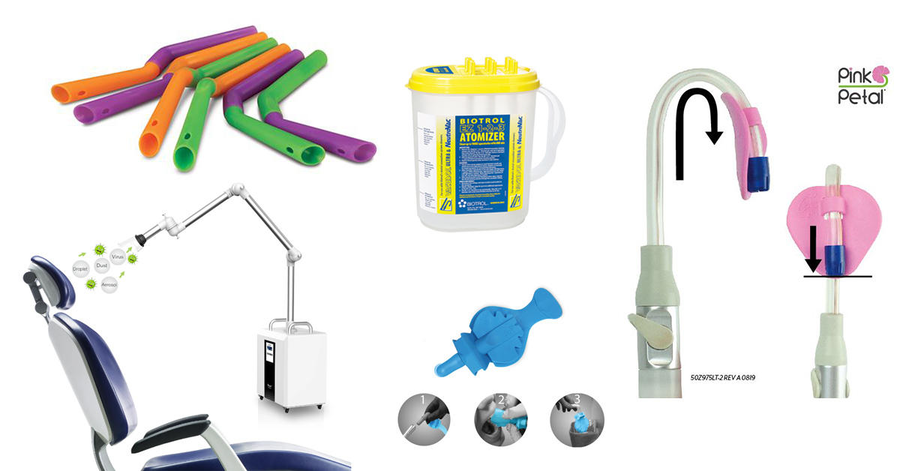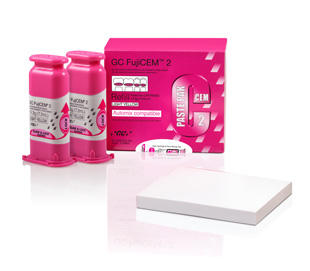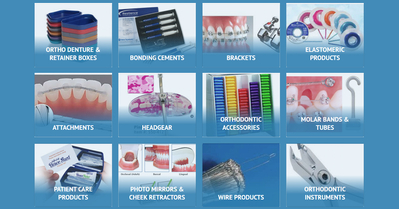5 Keys To Aerosol Reduction in Dental Settings
June 28 2020
In dentistry, many procedures using high-speed handpieces and ultrasonic instruments produce aerosols, small droplets that suspend in the air. Viral particles, bacteria, and fungi can travel through aerosols, similar to what happens when someone sneezes. In some cases, these particles can go up to 20 feet and stay suspended in the air for several hours.
Dental staff who perform procedures on patients find themselves at risk or exposure to many pathogens. The highest risk develops from splatter to the face of clinicians and to the nasal region of patients. Periodontal procedures using ultrasonic and sonic instruments transmit the greatest number of droplets. Air polishing, use of the air/water syringe, and the operation of a high-speed handpiece also produce aerosols.
Although aerosols don’t present a new challenge in dentistry, COVID-19 raises recent concerns. COVID-19 can stay suspended in the air after completion of a procedure and the patient has left the office. While there’s still a lot to learn about this virus, some of the findings suggest that the virus:
- Remains viable for up to 72 hours on plastic and stainless steel surfaces.
- Remains viable up to 24 hours on cardboard surfaces.
- Remains viable in micro-aerosols for up to three hours.
How Can Dental Practices Reduce Production of Aerosols?
Dental treatment that produces aerosols can rarely be avoided, but several key steps can be taken to control their spread.
- Use a High Volume Evacuation (HVE) suction system with an evacuation volume of at least 300 l/min.
- Use saliva ejectors to reduce saliva volume.
- Add multi-functional devices to make procedures safer and easier.
- Consider extra-oral suction devices to capture aerosols.
- Maintain essential HVE systems at optimal capacity.
HVE is a first-line protective mechanism against the spread of aerosols. Studies have shown that HVE can decrease aerosols by up to 98%. Precise, comfortable use for patients and providers serves to protect the safety and ergonomics of everyone. Look at options to increase the effectiveness of HVE in the clinical setting.
Angle Ease Adjustable HV Tip: This innovative tip features 12 locking angle adjustment positions to meet every treatment and clinician scenario. The tips offer ideal ergonomics and comfort for operators by lowering fatigue and wrist strain. The tips adjust from a straight bayonet position to a 90° angle to reach any area of the mouth.
Saliva ejectors remove a steady volume of saliva and reduce the source of aerosol production. Placing a Low Volume Evacuator (LVE) near the back or side of the mouth provides a steady reduction in saliva pooling.
Pink Petal attachments are an excellent addition to armamentarium during procedures. With easy attachment to a saliva ejector, they protect the cheek and help absorb moisture from the Parotid Gland through the Stensen Duct. This tool works with almost any saliva ejector, and they’re available in packs of 50.
Combining HVE and LVE devices offer a simple way to protect against aerosol production. But devices that incorporate bite support, tongue retraction, cheek protection, and suction help make many restorative and hygiene procedures safe and effective.
Mr. Thirsty One-Step is a cost-effective, multi-purpose device that helps meet ADA, CDC, and state guidelines to reduce aerosols during dental procedures. Available in different sizes, most patients discover they like the comfort and assurance from these devices.
Extra-oral suction devices offer another line of defense to keep splatter and droplets from propelling into the operatory environment. HVE and saliva ejectors help stop the formation of aerosols, but they don’t completely prevent them. Chairside floor units protect providers and patients, and they send a visible message about safety to your patients.
DuraMax X1 Extraoral Suction System is an exceptional aerosol reduction system that features the ultimate in additional protection. With ten power levels, its four-layer filtration system includes HEPA filtration plus germicidal UV light. A flexible tubing system can be placed in any position around the mouth during procedures. The unit also features remote control operation and wheeled portability for ultimate convenience.
HVE systems in dentistry have always been essential, but COVID-19 places more demand than ever on their operation. Proper maintenance protocols keep them operating at the recommended peak capacities and ensure they’ll stay operational without interruption. Plus, protocols help decontaminate vacuum lines from harmful pathogens and biofilm buildup.
The Biotrol Easy 1-2-3 Atomizer is patented to deliver Vacusol Ultra or NeutraVAC solution through the vacuum system with maximum effectiveness. The device draws air and liquid simultaneously, which is how dental HVE pumps are made to function.
Conclusion - Simple, Safe, Effective
COVID-19 will continue to produce many changes in dentistry and other aspects of healthcare. Many of the changes will be driven by emerging research, but patient and staff expectations will also drive trends.
Dental practices must consider the safety and expectations of the people they serve. Reducing aerosols is paramount, and engineering controls, like extraoral suction units, fit the guidance from OSHA and other regulatory bodies. While not required, patients and staff appreciate the efforts practices take to put safety first.
Evacuation products offer maximum effectiveness at the lowest cost without major modifications to space and protocols. Find what works best for your team by trying these simple devices, many of which have been developed by real-world providers.
Dental practices should take the opportunity to educate patients about the steps they’ve taken to keep clinical spaces safe. Social media posts, blog articles, emails, and website updates about new equipment help patients learn about your office and commit to offering the best healthcare experience.
Recent posts
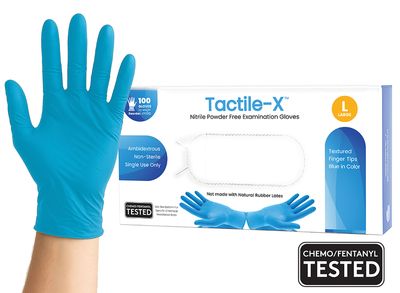
07-18-2025
Textured vs. Smooth Nitrile Gloves

02-12-2025
Ultrasonic scalers

10-17-2024
High Definition Black Line Mirrors
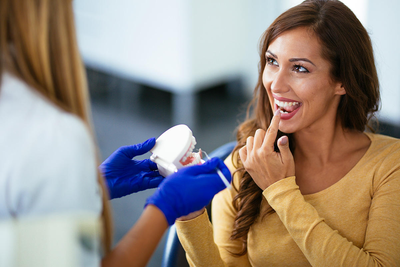
09-27-2020
